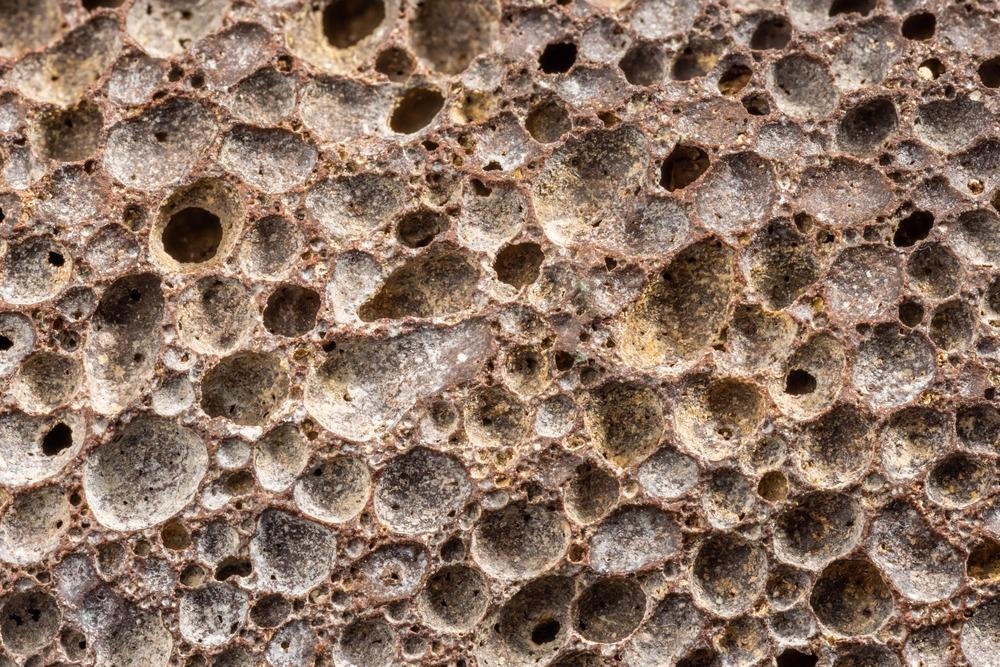While nanomaterials are considered materials with at least one dimension less than 100 nanometers, nanoporous materials contain gaps measuring between 1 and 1,000 nanometers. As with nanomaterials, nanoporous materials have a unique nanoscale structure that imparts all kinds of beneficial attributes. Their use extends to several applications, with researchers investigating many groundbreaking processes and strategies involving nanoporous materials.

Image Credit: teh_z1b/Shutterstock.com
Currently, these materials hold particular promise for diagnostics and research. For example, specifically engineered nanopores can be used to sort and analyze strands of DNA. These materials have also been used to manipulate cells and perform chromatography analyses.
Nanoporous materials also have distinct capabilities related to electrical connectivity. Research efforts are underway to determine if they can be used in next-generation energy storage devices.
Types of Nanoporous Materials
Nanoporous materials can be classified into two basic forms: bulk material and membranes. Activated carbon is a nanoporous bulk material with countless tiny pores that can increase surface area for adsorption or chemical reactions. Cell membranes are an example of nanoporous membrane material. This form of nanoporous material is studied for the development of groundbreaking drugs and medical treatments.
According to the International Union of Pure and Applied Chemistry (IUPAC), nanoporous materials can also be classified based on pore size: microporous material (pore sizes from 0 to 2 nanometers), mesoporous material (2 to 50 nm), and microporous materials (greater than 50 nm).
There are currently several techniques available to create nanoporous materials with the desired pore size, as well as methods that can be used to control pore distribution, the material's overall porosity, and its chemical composition.
The attributes of a nanoporous material can be affected by all of these factors. Current production methods can modify these aspects at the atomic and nanometer scales. For example, finely tuned fabrication techniques can produce nanoporous materials that interact with their environment in predetermined and desirable ways. Chemical composition is especially critical to the function of a nanoporous material.
The behavior and function of a nanomaterial are also primarily based on the permeability of its pores. Closed pores are nonpermeable, and they are associated with qualities like mechanical strength and thermal conductivity. Open pores are connected to the surface of the material and are therefore permeable. These pores play a significant role in the adsorption of fluids and gases.
One production technique used to fabricate nanopores materials with fine-tuned materials is called spray pyrolysis. This simple technique is commonly used to produce nanoporous materials for gas sensors, catalysis, and chemical or energy conversion systems. It involves inorganic precursors in alcoholic or aqueous solutions being sprayed onto a heated substrate. The sprayed solution then pyrolytically breaks down into a thin film with exceptional adhesion capabilities.
Applications and Potential Future Applications of Nanoporous Materials
Nanoporous materials are particularly attractive because they have many promising applications, such as for use in miniaturized and portable devices. They are also attractive because their unique attributes – including porosity, structure, and conductivity – can easily be tuned by established fabrication methods, including solid-state and precipitation reactions.
Currently, nanoporous materials are seen as particularly useful in applications involving ion exchange and adsorption. Suppose a material is fabricated with uniform pore sizes and a high surface area to volume ratio. In that case, it has an attractive number of catalytic sites that can be used for a number of these purposes, including catalysis and nonlinear optics.
These materials have been used in a number of commercial applications as well. For example, they have been used in medical diagnostics, food analysis, decontamination, drug delivery, and even anti-cancer treatment.
Future Outlooks
For the future, nanoporous materials seemed to hold promise in multiple areas, but especially for the medical field. According to experts, nanoporous materials could be functionalized with polymers capable of starting or modifying transportation at the molecular level. This enables drugs and medical treatments capable of responding to various stimuli within the body, such as a change in temperature or pH.
Some biomedical researchers envision a future where nanoporous materials are used in drugs or tiny medical devices that respond to the shifting physiological needs of a patient. In the same way cells in our body have nanoscale proteins that regulate the passage of molecules across cell membranes, nanoporous materials with functionalized polymers could differentiate between molecules intended for transport and not.
Continue reading: What are Silica Nanoparticles?
References and Further Reading
Ameen, S. et al. (2019) Introductory Chapter: An Introduction to Nanoporous Materials. Nanofluid Flow in Porous Media. [Online] Available at: https://doi.org/10.5772/intechopen.84773
Mishra, S et al. (2021) Potential Application of Nanoporous Materials in Biomedical Field. IntechOpen. [Online] Available at: https://doi.org/10.5772/intechopen.95928
Jibowu, T. (2016) A Review on Nanoporous Metals. Frontiers in Nanoscience and Nanotechnology. Front Nanosci Nanotech [Online] Available at: https://doi.org/10.15761/FNN.1000129
Disclaimer: The views expressed here are those of the author expressed in their private capacity and do not necessarily represent the views of AZoM.com Limited T/A AZoNetwork the owner and operator of this website. This disclaimer forms part of the Terms and conditions of use of this website.